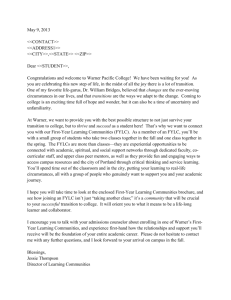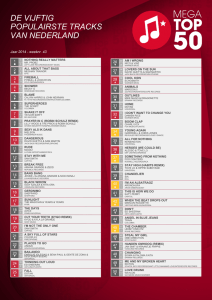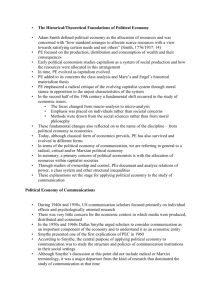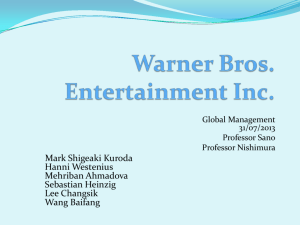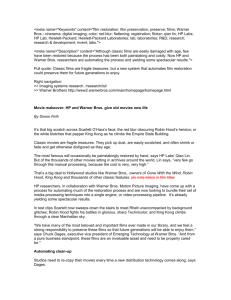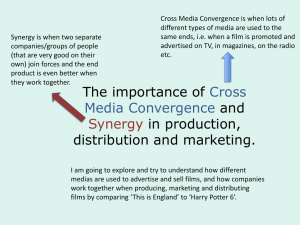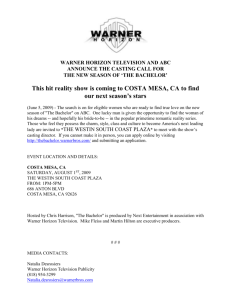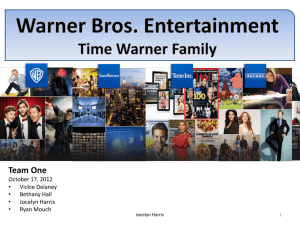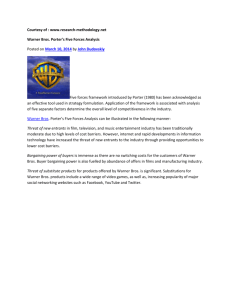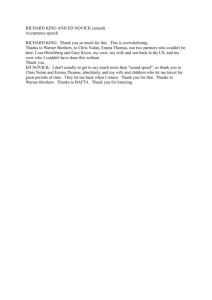File
advertisement
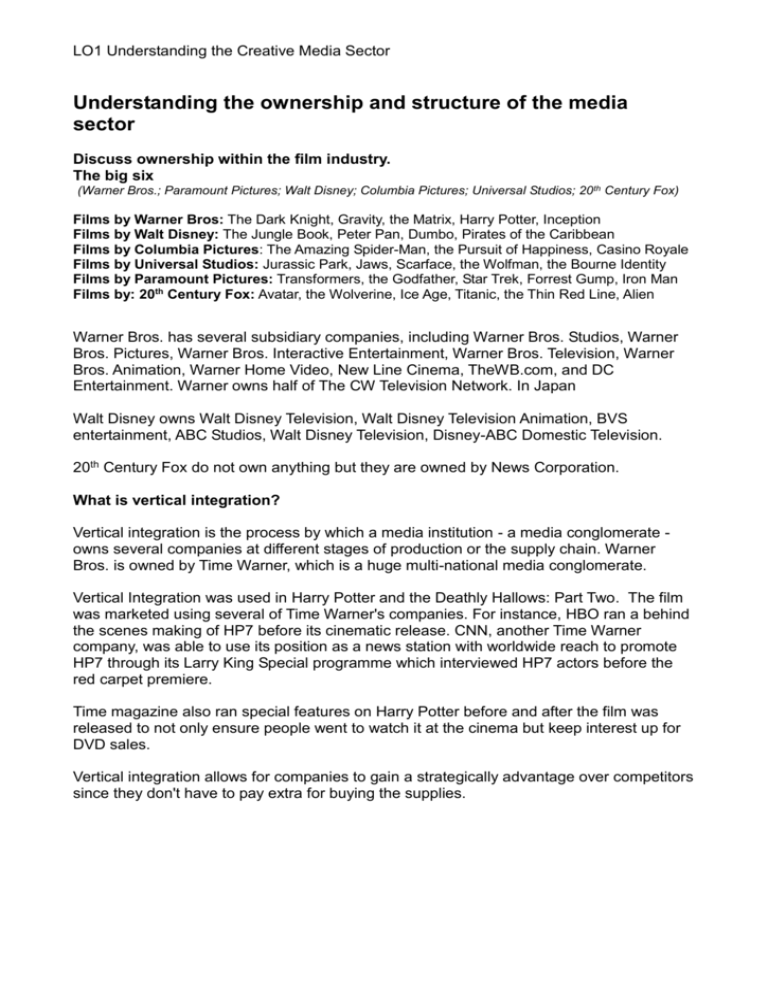
LO1 Understanding the Creative Media Sector Understanding the ownership and structure of the media sector Discuss ownership within the film industry. The big six (Warner Bros.; Paramount Pictures; Walt Disney; Columbia Pictures; Universal Studios; 20 th Century Fox) Films by Warner Bros: The Dark Knight, Gravity, the Matrix, Harry Potter, Inception Films by Walt Disney: The Jungle Book, Peter Pan, Dumbo, Pirates of the Caribbean Films by Columbia Pictures: The Amazing Spider-Man, the Pursuit of Happiness, Casino Royale Films by Universal Studios: Jurassic Park, Jaws, Scarface, the Wolfman, the Bourne Identity Films by Paramount Pictures: Transformers, the Godfather, Star Trek, Forrest Gump, Iron Man Films by: 20th Century Fox: Avatar, the Wolverine, Ice Age, Titanic, the Thin Red Line, Alien Warner Bros. has several subsidiary companies, including Warner Bros. Studios, Warner Bros. Pictures, Warner Bros. Interactive Entertainment, Warner Bros. Television, Warner Bros. Animation, Warner Home Video, New Line Cinema, TheWB.com, and DC Entertainment. Warner owns half of The CW Television Network. In Japan Walt Disney owns Walt Disney Television, Walt Disney Television Animation, BVS entertainment, ABC Studios, Walt Disney Television, Disney-ABC Domestic Television. 20th Century Fox do not own anything but they are owned by News Corporation. What is vertical integration? Vertical integration is the process by which a media institution - a media conglomerate owns several companies at different stages of production or the supply chain. Warner Bros. is owned by Time Warner, which is a huge multi-national media conglomerate. Vertical Integration was used in Harry Potter and the Deathly Hallows: Part Two. The film was marketed using several of Time Warner's companies. For instance, HBO ran a behind the scenes making of HP7 before its cinematic release. CNN, another Time Warner company, was able to use its position as a news station with worldwide reach to promote HP7 through its Larry King Special programme which interviewed HP7 actors before the red carpet premiere. Time magazine also ran special features on Harry Potter before and after the film was released to not only ensure people went to watch it at the cinema but keep interest up for DVD sales. Vertical integration allows for companies to gain a strategically advantage over competitors since they don't have to pay extra for buying the supplies. LO1 Understanding the Creative Media Sector What is horizontal integration? Horizontal integration is a strategy where a company creates or acquires production units for outputs which are alike - either complementary or competitive. One example would be when a company acquires competitors in the same industry doing the same stage of production for the creation of a monopoly. Horizontal Integration was used in James bond: Casino Royal. Casino Royal is mostly made by Sony owned companies such as Columbia Pictures, however other companies were involved in the production such as MGM, which is based in America. This means that Casino Royal used horizontal integration because it expands into other companies during the making of the film. Horizontal integration allows for corporations to acquire monopolies and raise prices on buyers. Those who use horizontal integration still have to pay for supplies, but they have complete control over prices. What is a conglomerate? A conglomerate is a company that comprises multiple different corporations. The most common type of conglomerate is a parent company with one or more subsidiaries, which are partially or wholly-owned companies. As of 2008, The Walt Disney Company is the world’s largest media conglomerate, with News Corporation, Viacom and Time Walker ranking second, third and fourth respectively A conglomerate is, by definition, a large company that consists of divisions of seemingly unrelated businesses. What is a multinational company? A multinational company is one that has business interests or agents/offices in countries in addition to their own. Some examples are: Mitsubishi Corporation Honda Coca Cola Nintendo McDonald's Mercedes Benz

